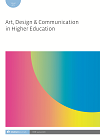
Full text loading...
 , Koray Gelmez1
, Koray Gelmez1
Peer critiques play a major role in the design learning process. However, due to vague boundaries and definitions of them, it is hard and yet significant to model peer critiques in the context of design education. This article aims to gain a greater understanding about dynamics, motivations and contents of peer critiques. As a result, a framework to categorize peer critiques in design education context is presented. Also, a new type of peer critiques is suggested as compassionate critiques, which are defined as statements that occur between hierarchically equivalent, emotionally matched individuals and contain a general appreciation and sensitivity without determinate judgements about the idea, project or process.

Article metrics loading...

Full text loading...
References


Data & Media loading...

Publication Date:
https://doi.org/10.1386/adch_00069_1 Published content will be available immediately after check-out or when it is released in case of a pre-order. Please make sure to be logged in to see all available purchase options.